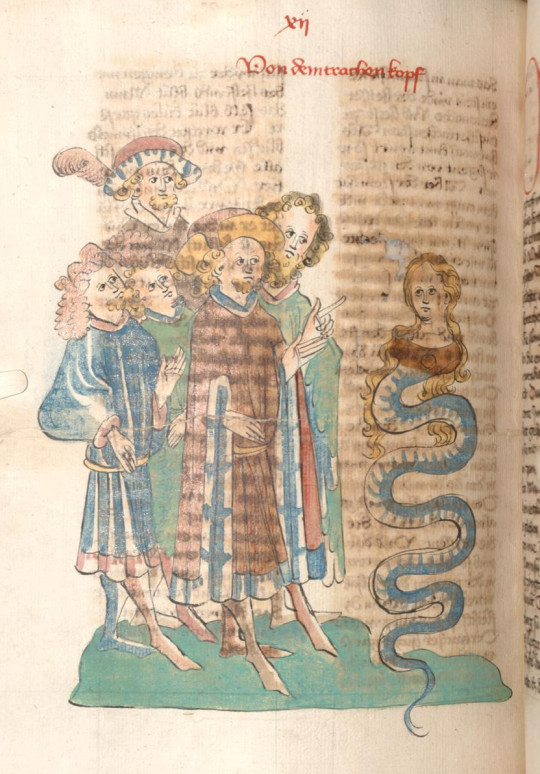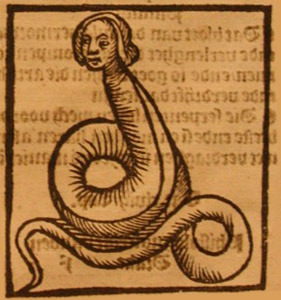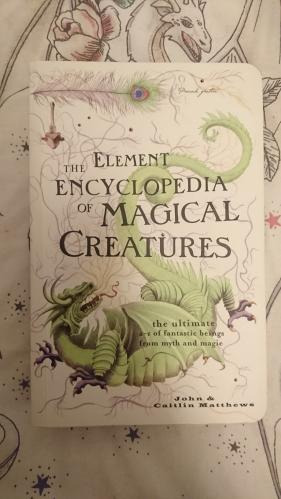#draconcopedes
Text

draconcopes (trachenkopf)
in a copy of konrad von megenberg's "buch der natur", illustrated by the workshop of diebold lauber, alsace, c. 1440
source: Frankfurt, UB, Ms. Carm. 1, fol. 191v
#15th century#buch der natur#konrad von megenberg#diebold lauber#trachenkopf#drachenkopf#draconcopes#draconcopedes#hybrids#serpents#medieval art
356 notes
·
View notes
Text
Write Your Own Adventure Lesson 9: Research for Your RuneQuest Adventure
This lesson discussed what research might need to be done for an RPG adventure, both of the fictional setting and of relevant details taken from the real world, and asked participants to write down what research they would have to for their particular adventure. Here's what I wrote:
I've already been doing some research about Glorantha to write my adventure. In particular, I wanted to find out as much as I could about the Lismelder Tribe and the Upland Marsh. There's not that much about either in seventh edition materials (though the Gamemaster Adventure book does have some information on the Lismelder tribe), but there was more in earlier editions, in Tales of the Reaching Moon #19 and Wyrm's Footprints #15, so I skimmed through those sources for anything that looked relevant or useful. (I also asked questions on the Chaosium forums and got very helpful responses from the posters there.)
Again, it turns out I missed some important material about Ten Spear, so I apparently didn't research it as well as I thought. Oh well. Moving on...
As for some real-world topics of research, well, the RuneQuest Roleplaying in Glorantha core book mentions that the lismelder Tribe "are famous for their great beer", so I figured maybe Ten Spear could have a brewery. But I really don't know anything about how beer was brewed in the Bronze Age (heck, I don't know anything about how beer is brewed today), so that's something to research.
Oh, yes, and (at least) one more thing. I wanted the spirit in the shard to be the spirit of a long-dead Beast Man of an extinct species… but I hadn't decided on what that species was. With the exception of the ducks, the established kinds of Beast Man of Dragon Pass are all based on creatures from classical mythology and/or medieval beliefs, so I wanted to find some other suitable part-human mythical creature that hadn't been used, but I hadn't settled on what yet. (I can think of a few—the onocentaur, the cynocephalus, the sphinx—but I'm sure there are others I'm forgetting or don't know about.)
Oh, hey, and I just found one that I think would work perfectly: the draconcopedes. A snake with a human head mentioned in some medieval bestiaries. That'll do. At least, assuming it checks out when I verify the sources and make sure it's not something made up by some Wikipedia editor.
Hm, wait, on second thought, maybe not. Glorantha isn't a medieval world, after all; it's a Bronze Age world, and while the manticore, for instance, may have been best known from medieval bestiaries, its roots go back to ancient Persia. The earliest references to the draconcopedes seem to be from the Middle Ages, so it's not really old enough. I'll keep looking.
Oh, there's the lammasu, of course. Eh, maybe, but it's not really grabbing me. The buraq… hm.
Hm, here's a part-human part-goat creature, but that may be too close to the broo:
https://www.eranshahr.com/myths/ghara-gharnagh
There's also this turtle-person from the same site:
https://www.eranshahr.com/myths/ab-laku
Wait, aren't there those ancient cave paintings of antelope-man "therianthrope" figures? Oh, yeah, here's what I was thinking of:
https://www.labrujulaverde.com/en/2020/06/the-strange-and-controversial-prehistoric-sorcerer-of-the-cave-of-the-trois-freres
Though apparently it's more controversial than I realized. Still, I'm just looking for an ancient myth to use for inspiration; I guess it doesn't matter too much if it's completely authentic. If I'm going for an extinct type of Beast Man, that might be a good fit. Of course, there isn't really an established name for this figure (aside from the clearly unusable "Sorcerer")… but I guess I could just call them "antelope men", and that would be fine. I'll tentatively go with that for now, though I'll keep my eye out for something I like better.
(Hm, interesting, there are also cave paintings of bison-headed figures, apparently:
https://www.faculty.umb.edu/gary_zabel/Courses/Phil%20281/Philosophy%20of%20Magic/My%20Documents/Therianthropes.htm
Well, I think I'll stick with the antelope for now.)
As for the Bronze Age brewing, I found a few sites with some interesting information on that, including the "oldest known beer recipe" https://www.realmofhistory.com/2017/09/22/oldest-beer-recipe-mesopotamia-ninkasi/ , a description of discovered ruins of an ancient Green brewery https://www.livescience.com/61590-oldest-beer-in-greece.html and an article about Bronze Age beer-brewing in Ireland https://www.irishtimes.com/culture/unearthing-bronze-age-brewing-1.953684. Oh, and this could be useful: a video of a reconstruction of brewing techniques from a 3800 recipe https://ne-np.facebook.com/BeoirFestonline/videos/recreating-a-bronze-age-beer-for-the-modern-world/708828930137367/ Okay, I think there's enough here I can get a sufficient idea of what a Bronze Age beer brewery may have been like.
Oh, yes, one more thing. I was going to have beekeeping as one of the village's more significant industries, so… I guess that's another thing to research. Though this page looks like a promising start: https://www.agriculturalmuseums.org/2020/04/16/how-has-beekeeping-changed-over-time-an-archaeobeekeeper-and-an-archaeological-open-air-museum-in-germany-showcase-pre-and-proto-historic-beekeeping-methods/ Oh, and here are a few more documents I can look at: https://www.evacranetrust.org/uploads/document/2949b8a5ef604548975b4b0eb7d9e738cd654435.pdf https://www.apicultural.co.uk/tears-of-re-beekeeping-in-ancient-egypt
(Okay, yeah, I could make those links clickable in this Tumblr post but, eh, it's taking me long enough to make all these posts as it is, and I need to spend time actually working on the adventure. You can always copy and paste the links if you really want to see where they go.)
2 notes
·
View notes
Text
Draconcopedes

Name: Draconcopedes
Type: Folkloric
Culture of Origin: Medieval Europe
Description: A serpent with the head (and often breasts and arms) of a woman.
Myth: N/A
Facts:
In some versions of the story, the Serpent in Eden is depicted as having the head, breasts, and arms of a woman.
Some claim this serpent is Lilith, Adam’s first wife.
Albertus Magnus says the Draconcopedes is of the dragon genus, and describes it with the unbearded face of a man.
13 notes
·
View notes
Text
Book Review: The Element Encyclopedia of Magical Creatures by John and Caitlin Matthews

The Element Encyclopedias are a series by Harper Element, containing books on Secret Signs and Symbols, Birthdays, magic (Encyclopedia of 1000 and 5000 spells), Secret Societies, Witchcraft, Ghosts and Hauntings, the Psychic World, Vampires and of course, Magical Creatures. These Encyclopaedias cater to niche interests on the weird and wonderful. They aim to deliver a factual overview of particular subjects, covering as many different viewpoints from as many different cultures as possible.
The Element Encyclopedia of Magical Creatures is a compact volume; most entries are only a sentence long. The limitation of an Encyclopaedia format is that the entries are in alphabetical order by only one spelling of their name, which means the author chooses name spellings they think are best and stick with them – for example Pai Lung is used but Bailong is not – which means if a reader is looking up a creature by one specific spelling they might not be able to find it. This issue is solved by other, similar books by having multiple entries for a creature, for example an entry saying ‘bailong’ would say ‘see Pai Lung’ to redirect the reader to the correct chapter. However, the choice to NOT do this in the Element Encyclopedia means that the book can be a small volume jam-packed with information. This decision means the book is well formatted and neat, easy to read with a good font size, and a good place to find out about a lot of dragons.
If a dragon has a full story to it, it may not be recounted in full; for example the entry for ‘Bida’ simply reads ‘Bida is an African dragon, which appears in the West African Epic of the Dausa’. However, enough information is given so that the reader has a few terms to google (“bida dragon epic of the dausa” for example). Again, I think the brevity of the book can act as a benefit, as the book is very easy to read and accessible compared to some more thorough books with smaller font sizes and bigger book sizes.

For further research, the bibliography is eight pages long (two columns per page) and mentions not only books, but articles from magazines (the Fortean Times, for example, is a magazine which can dedicate many, many pages to interesting mythology topics).
Quick note on the reading age; there is some sexual content in the story of the Egyptian god Set and maybe in a few other entries. These mentions are only where they are pertinent, and they are written in a factual manner, but if you buy this book as a gift for a young reader be aware of whether this content is appropriate for them.
Dragons covered by The Element Encyclopedia of Magical Creatures are:
Abaia, Afanc, Agathodemon, Ahi, Aiatar, Aida Hwedo, Aitvaras, Akhekhu, Alklha/Alicha, Altamaha-Ha, Amphithere, Amphisbaena, Amphisien, Anamtaboga, Anata Sesha, Angont, Ao Chin, Ao Kuang, Ao Ping, Ao Shun, Arassas, Asdeev, Aspis, Ayida, Azi Dahaka, Basilic, Basilisk, Beithir, Bida, Bistern Dragon, Bobbi-Bobbi, Bujanga, Bunyip, Burach Bhadi, Buru, Camoodi, Cecrops, Cerastes, Cetus, Champ, Ch’ang O, Chang Lung, Chi Lung Wang, Chudo-Yudo, Cipactli, Cirein Croin, Cockatrice, Con-Rit, Da, Dabbat, Dahak, Damballah Wedo, Dan Ayido Hwedo, Ddraig Goch, Derketo, Dev, Dhrana, Dhumavarna, Draco, Draconcopedes, Dracontides, Dragon, Dragon-Horse, Drake/Fire-Drake, Echeneis, Echidna, Eight-Forked Serpent of Koshi, Elbst, Falak, Fire Dragon, Fire-Drake, Fu-Hsi, Fu-T’s’ang, Gaasyendietha, Ganareva, Ganj, Gargouille, Glycon, Glyryvillu, Gong-Gong, Gorynich, Goryschche, Gou Mang, Gowrow, Great Horned Serpent, Great Lynx, Great Serpent of Hell, Gucumatz, Guita, Gurangnatch, Guyascutus, Gwiber, Hai Riyo, Hatuibwari/Figona, Herren-Surge, Hordshyrde, Horned Serpent, Horomatangi, Huru-Kareao, Hydra, Hydrus et cetera
(I tried to list every dragon by flicking through the book page-by-page and writing them down but that took a while – hopefully the dragons from A to H listed here gives you an idea on how thorough and extensive this book is!)(spellings are as they are in the book, I’ve seen herren-surge spelled more often as herensurge)
If this book appeals to you it can be found here:
Thriftbooks: https://www.thriftbooks.com/w/the-element-encyclopedia-of-magical-creatures-the-ultimate-a-z-of-fantastic-beings-from-myth-and-magic-the-element-encyclopedia_john-matthews_caitln-matthews/390280/#isbn=0007850506
ePDF https://epdf.pub/the-element-encyclopedia-of-magical-creatures-the-ultimate-a-z-of-fantastic-bein.html
#Dragon Books#Book Review#Caitlin Matthews#John Matthews#Elemental Encyclopedia#The Element Encyclopedia of Magical Creatures
8 notes
·
View notes
Text
Mythology & Fantasy Monsters Mega-Post II
Fallen Angel (Angel)
Gulyabani (Shifter)
Tepegöz (Ogre)
Tepegöz, Polyphemus (Ogre)
Flaga (Spirit)
Devil (Angel)
Devil, Crossroads Demon (Demon)
Devil, Archon (Angel)
Devil, Vėlė (Spirit)
Emmet (Vermin)
Emmet, Pismire (Vermin)
Ass-Bittern (Hybrid)
Humā Bird (Bird)
Humā Bird, Double Headed Griffin (Hybrid)
Humā Bird, Paradise Bird (Bird)
King Charles Parrot (Hybrid)
King Charles Parrot, Rabbit Bird (Hybrid)
Polypus (Vermin)
Polypus, Sea Scorpion (Vermin)
Black Annis (Humanoid)
Black Annis, Saalua (Spirit)
Kirata (Humanoid)
Drude (Faery)
Drude, Boo Hag (Spirit)
Drude, Bakhtak (Demon
Drude, Churel (Faery)
Brahmaparusha (Undead)
Brahmaparusha, Asiman (Spirit)
Ubu King (Demon)
Tennin (Faery)
Tennin, Yosei (Faery)
Berehynia (Faery)
Berehynia, Azukitogi (Humanoid)
Sea Troll (Beast)
Sea Troll, Ri (Merfolk)
Sea Troll, Moruadh (Merfolk)
Sea Troll, Orc-Thyr (Merfolk)
Sea Troll, Roane (Shifter)
Tasaday (Faery)
Snouter (Vermin)
Snouter, Sniffling Snouter (Vermin)
Snouter, Nasobame (Vermin)
Snouter, Tyrannosasus (Beast)
Snouter, Mamontops (Beast)
Duppy (Elemental)
Duppy, Bogle (Faery)
Duppy, Woodarjee (Faery)
Pennines Pterosaur (Drake)
Moon-Eyes (Alien)
Moon-Eyes, Melon Head (Humanoid)
Gajasimha (Hybrid)
Catfish (Hybrid)
Catfish, Leonine Whale (Beast)
Lybbarde (Beast)
Lybbarde, Pantheon (Hybrid)
Lybbarde, Tyger (Beast)
Minocane (Humanoid)
Stellione (Reptilian)
Allocamelus (Beast)
Crowned Lion (Beast)
Crowned Lion, Manticora (Beast)
Almas (Humanoid)
Almas, Yeren (Humanoid)
Almas, Hibagon (Beastman)
Biscione (Reptilian)
Biscione, Draconcopedes (Hybrid)
Moura Encantada (Faery)
Apotharni (Beastman)
Apotharni, Hippocentaur (Hybrid)
Apotharni, Quaraphon (Beastman)
Apotharni, Polkan (Hybrid)
Apotharni, Lapith (Beastman)
Ennedi Tiger (Beast)
Ennedi Tiger, Dilali (Beast)
Ennedi Tiger, Mamaimé (Beast)
Ennedi Tiger, Vossoko (Hybrid)
Ennedi Tiger, Gassingram (Beast)
Yamabushi (Demon)
Yamabushi, Shikigami (Faery)
Sereia (Merfolk)
Sereia, Tchimose (Shifter)
Sereia, Gunnuhver (Undead)
Zanryū Nipponhei (Undead)
Rosmarus (Beast)
Rosmarus, Selamóðir (Beast)
Skeljúngur (Beast)
Skeljúngur, Sverðhvalur (Beast)
Skeljúngur, Taumafiskur (Beast)
Cherub (Angel)
Cherub, Cupid (Deity)
Cherub, Putto (Faery)
Tzimisce (Undead)
Tzimisce, Vozhd (Construct)
Tzimisce, Szlachta (Undead)
Bogatyri (Ogre)
Vampire Hunter (Humanoid)
Skellring (Humanoid)
Morpheus (Deity)
Morpheus, This Man (Spirit)
4 notes
·
View notes
Photo

Draconcopedes
In many medieval variants of the Story of Eden, it was not a snake that tempted mankind in the Garden, but instead a dragon with the head, face, and sometimes breasts of a woman.
Despite the name, roughly meaning ‘dragon with feet’, this creature invariably has the body of a snake or wyrm.
40 notes
·
View notes